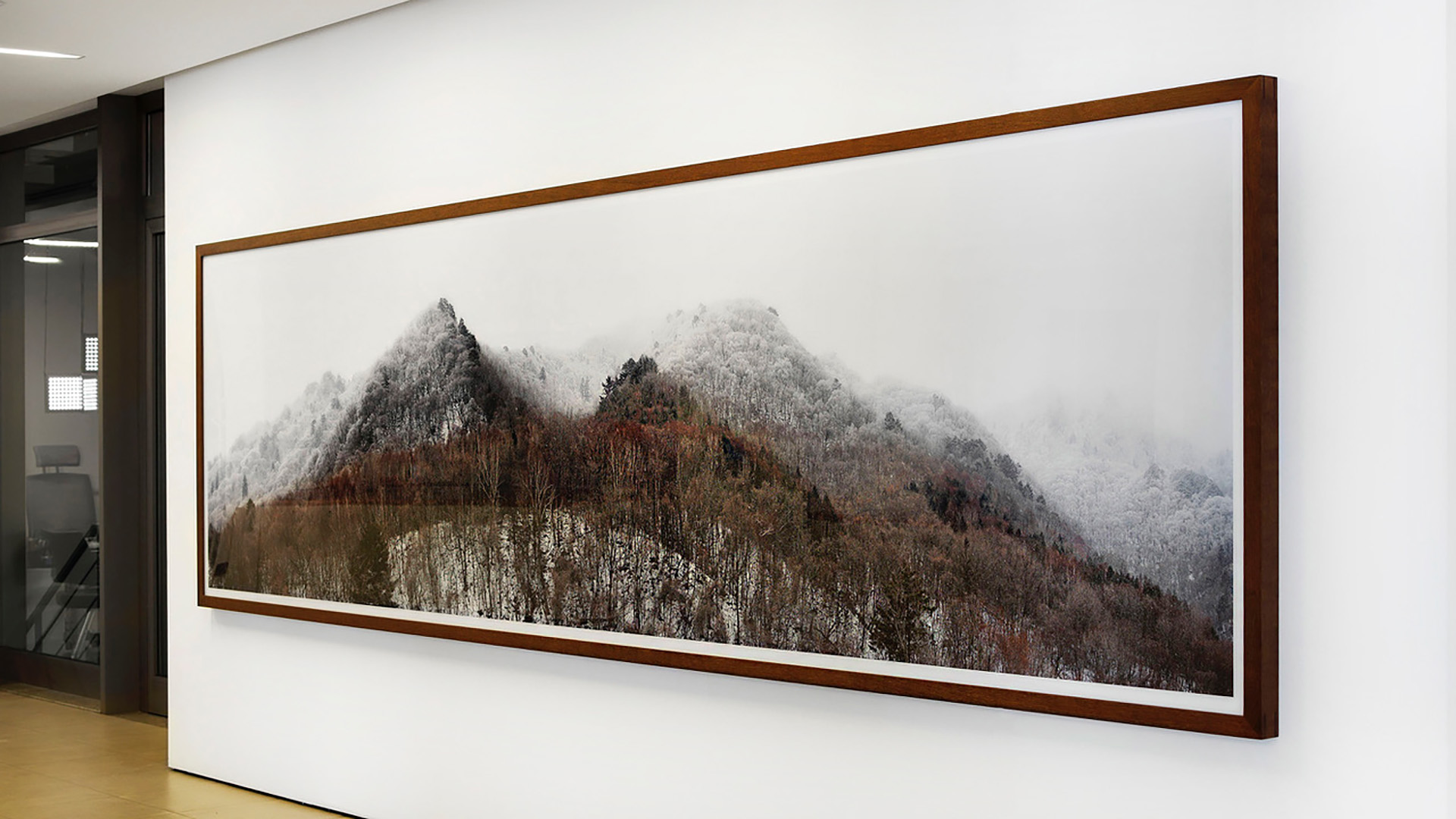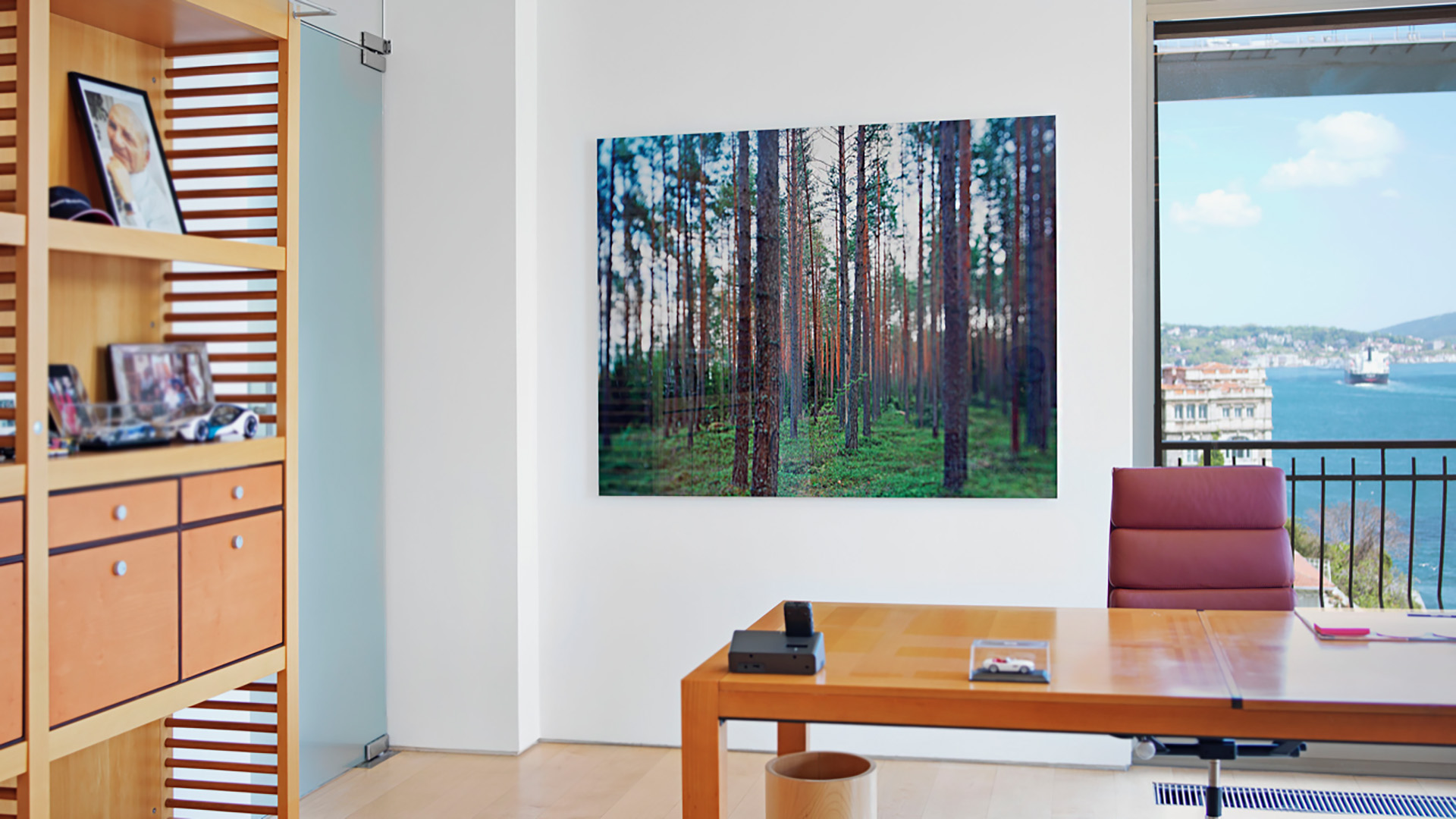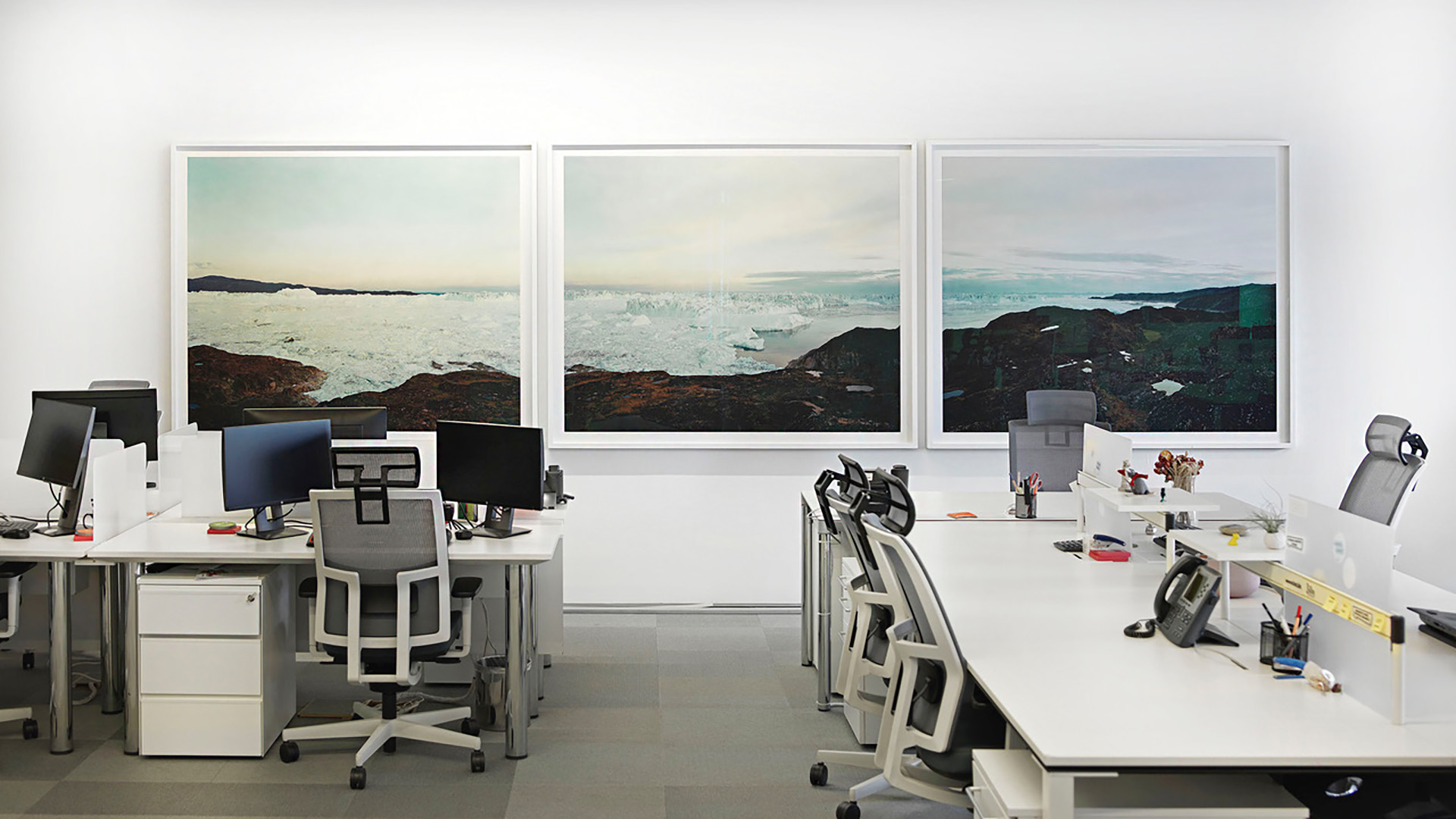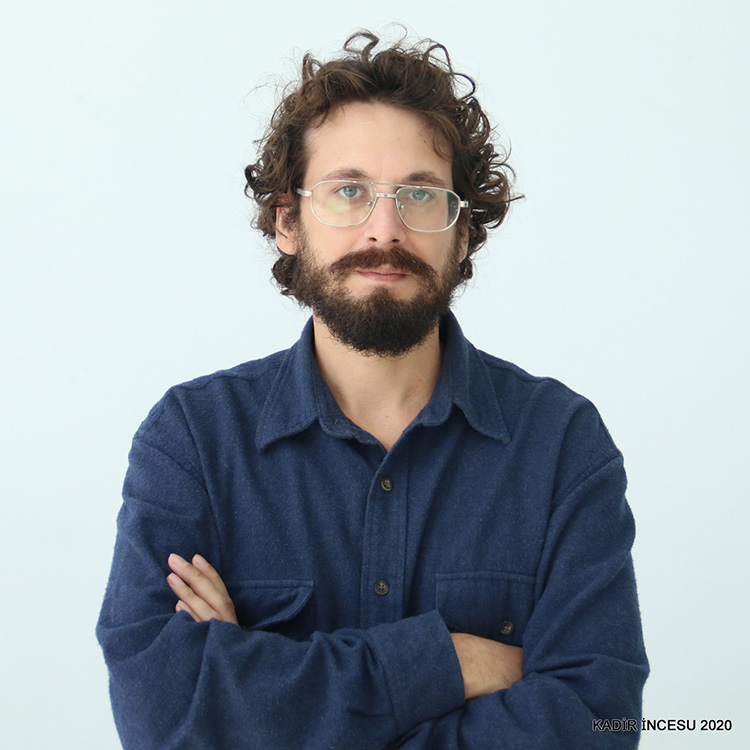Blog
Dissipation of the silhouette
21 September 2021 Tue
“We want the creative faculty to imagine that which we know;
we want the generous impulse to act that which we imagine. We want the poetry of life.”
- Percy Shelley, A Defense of Poetry
In this third text of series, “The Transformation of Landscape,” I intend to inquire into the photographs of Boomoon, Olaf Otto Becker and Charles Xelot, which are included in the Water Reverie exhibition and, by extension, to propose a conceptual discussion with respect to the theme of “depopulated landscape” through these works in question.
Taking the historical and conceptual background of this depopulated landscape concept back to the Romantic era, suggesting that its first indications were found in that period is tantamount to expressing that we have one foot in the Romantic era while existing in the actuality of today’s art. Late 18th century, where Romantic thought began emerging, has also set the stage for the invention of James Watt’s steam engine (1775), thence the inception of the Industrial Revolution. 1 The development of railroad systems in various countries, the rapid industrialization and growth of factories have brought a new period in their train, where capitalism rose like polluted air, and mass consumption made headway. Considering the era’s socio-economic and cultural context, all these developments have resulted in the exhaustion of nature in humankind’s favor. Nature has become a source, which could be exploited for the sake of humankind’s ambition. As such, the intellectual background of the depopulated landscape should be sought in the philosophies of Spinoza, Hegel, and in the relationship between form-content in the Romanticism.

Boomoon, Untitled #13880, Seorak, 2010.
Installation view from the Water Reverie exhibition.
Having influenced Romantic art and thought, Spinoza’s criticism towards Cartesian thinking (cogito ergo sum 2 ), whereby Descartes situates humankind at the center of life, makes one interrogate the notions concerning nature and God. In his book, A Discourse on Method, Descartes draws a hierarchical distinction between animals and humans, arguing that the former are material automata without souls, who lack the sensation of pain. 3 Indeed, at the core of this concept is the effort to prove the existence of God, who is believed to be at the top of the pyramid. In Spinoza’s thought however, God and nature are not expressed as two distinct entities. If anything, they are immanent to each other, meaning they are one and the same; one is not the cause or the effect of the other. Referring to the living being besieged by the essence as “its own cause” (causam sui 4 ), Spinoza elucidates its existence through the very being’s immanence to not another one but to itself. In his regard, attributing humane qualities to God is an effort in vain, given God cannot/would not appear in the human form. 5
As far as the medieval era is considered, art has been consecrated to the depiction, in other words, the representation of the holy and the divine (notably like that of Jesus and his disciples). In his book, Aesthetics: Lectures on Fine Art, Hegel imparts that this exercise has changed with Romanticism. Stating that art has freed itself from the religion art (kunstreligion) after the Reform, Hegel argues that an art bereft of religious profundity would manifest itself in views of nature and landscapes. 6 Failing to convey the spiritual/intrinsic sensations in the Romantic era, art’s content has begun outstripping its substance, and transcending it. Thus expanding towards the sphere of philosophy, art has inevitably become subject to visual changes. 7
According to Timothy Morton, in this framework, art acquires a character as per the embodiment of the spiritual content: “The more you have of landscapes that convey the subjectivity of the implied viewer, the more you have of hills, trees and water.” 8 Religious symbols and figures leave their place to nature and (its) elements. The alteration in question may be regarded as some kind of change in the direction of art, if examined from Spinoza’s perspective on the context of God/nature. In Hegel’s view however, art has a price to pay for having gained sovereignty by disencumbering itself from the holy: having abandoned the religious lexicon and adopted the representation of the reality, art has ensured its own ruin. 9 This situation in the historical course of art makes it compulsory for the relationship between the form and content to die out. It no longer needs to be a copy, or for that matter, a representation of the outer world and the visible reality. The depiction of the human on the other, begins to fade away from the surface of the painting; mountains, seas, prairies, the sky, rivers, valleys – anything but the humankind begins to appear as the painting’s subject. The idea that art finds its true essence in the absence of human figures is indeed the subtext of the landscapes by Caspar David Friedrich, William Turner or in John Constable, all of which present an unspoiled nature, without any human trace whatsoever. In his article titled, The Dehumanization of Art, José Ortega y Gasset proposes supportive arguments for this theory. According to Ortega, 19th century artists have reduced the strictly aesthetic elements to a minimum on the painting’s surface. 10 An attempt in that direction implies an attitude for the purification of art, while indicating art’s disposition for the “novel.” 11 Notwithstanding its novelty, art preserves its purpose to be art; according to Ortega, that may only be realized through the dehumanization of art.

Charles Xelot, Diptych Forest #2, 2010.
Installation view from the Water Reverie exhibition.
Similar concerns under different conditions prevail in today’s art. The works of Boomoon, Olaf Otto Becker and Charles Xelot from the exhibition, Water Reverie curated by Necmi Sönmez, show certain affinities in terms of both their approach to the art object and the theme of depopulated landscape. South Korean photographer, Boomoon’s work Untitled (Seorak), dating to 2011, ensues from his series, Sansu of 2008. The series refer to the concept of Sansu, which means “mountain water”; it uses the nature representation of the Far Eastern aesthetics as its source. The traditional aesthetic of Sansu seeks a metaphysical counterpart in nature as some sort of embodiment of the Confucianist and Taoist tradition. The notion of depopulated landscape is also evident in this series shot on the mountain ranges of the Gangwon Province, located on the East of South Korea, as it is the case throughout his body of work. In his landscapes devoid of humans, authentic views independent of the outer world’s given reality come to the fore, instead of a mimetic depiction of nature. In Sansu series, nature unfolds as an ambiguity beyond the negative connotations of the word, which does not fixate on a single meaning; it encompasses plural meanings, interpretations and possibilities.
Depopulated landscape as an expression of ambiguity extends also to the works of Olaf Otto Becker and Charles Xelot. Dating to 2010, Diptych Forest is a work by Xelot shot in Russia as part of the photography series, Northern Forests. In these landscapes, rows of trees expand vertically and horizontally, into infinity. The trees, aligned one row after the other in this perspective, decidedly evoke a chaotic perception. Contemplated by viewers, the uninhabited forest views allude to a perpetual flow and movement. This brings to mind Alfred North Whitehead’s argument that nature is an existing and continuous phenomenon for the sense-awareness, and that we cannot speak of a nature that stays put motionlessly for us to watch. 12 In that very respect, Northern Forests by Xelot bestows the trails of time that passes by, to the essence of nature and the intuition of the viewer.

Olaf Otto Becker, Illulissat Icefjord 4, 07/2003, 69°12'74" N, 51°07'88" W, 2003.
Installation view from the Water Reverie exhibition.
The deed of depopulation occurs differently in Olaf Otto Becker’s landscapes. His landscapes, howbeit devoid of humankind, pose a pivotal question pertaining to humans in terms of their impact on nature. In revealing the scars they left on earth and the destruction of nature caused by the ensuing phenomenon of global warming, his work questions humankind’s perpetratorship and position in the center of life. As it happens, his work in the exhibition, titled Ilulisat Icefjord 4 (2003) centers on the changing landscape of Greenland, which has begun melting due to global warming. The artist shot the region with a large format camera during a discovery trip he made along the 4000 kilometers-long Western coastline, bringing the viewers a landscape of bergy bits that are calved off the glacier, floating in the abyss. It is perfectly possible to read this scenery as an aftermath of humanity’s attempt of objectifying nature with absolute rationality. Even so, the subsistence of nature abides in its essence, which cannot be reduced to an exploitable source. To that end, the leading role in today’s art is given not to the humankind, but rather to the non-human living or non-living things, and the interaction amongst these beings. To put it in Morton’s words, in the Asymmetrical Era, art unfolds in a future devoid of us humans; this way, in things we see, infinity of the non-human beings’ inner abyss is perceived. 13
1- The same period sees the arrival of the “Frühromantics” and the publication of the literary magazine, Athenaeum (1798) by the Schlegel Brothers.
2- “I think, therefore I am.”
3- Descartes, R. (1929). A Discourse on Method: Meditations and Principles, Translation: John Veitch, J. M. Dent & Sons Ltd., London, p. 44-46
4- Spinoza, B. (2020). Spinoza’s Ethics (C. Carlisle, Ed.; G. Eliot, Trans.), Princeton University Press.
5- Ibid.
6- Hegel, G. W. F. (1975), Aesthetics Lectures on Fine Art (T. M. Knox, Trans.), Oxford University Press, London, p. 831.
7- Morton, T. (2012). “Art in the Age of Asymmetry: Hegel, Objects, Aesthetics”, in Aesthetics After Hegel, Vol. 1 No. 1, p. 131
8- Ibid, p.130
9- Houlgate interprets this as the “dissolution of art”. Houlgate, S. (1991). An Introduction to Hegel: Freedom, Truth and History, United Kingdom: Blackwell Publishing, p. 237
10- Ortega Y Gasset, J. (1968). The Dehumanization of Art and Other Essays on Art, Culture, and Literature, Princeton University Press.
11- Ibid.
12- Whitehead, A. N. (2015), The Concept of Nature: Tarner Lectures, Cambridge University Press.
13- Morton, T. (2012). “Art in the Age of Asymmetry: Hegel, Objects, Aesthetics”, in Aesthetics After Hegel, Vol. 1 No.1. Timothy Morton identifies our era as the Asymmetric Phase, and argues that era we have entered is inevitably an ecological one, where a new phase of art, which is “unpredicted, and unpredictable”, comes about. For detailed information: Morton, T. (2013). Hyperobjects: Philosophy and Ecology After the End of the World, University of Minnesota Press.
ABOUT THE WRITER
Uras Kızıl is an Istanbul based art historian, critic and researcher.
Kızıl graduated from Mimar Sinan Fine Arts University cum laude in 2015. He studied at the Berlin Freie Universität with the Erasmus program in 2014. Upon his return, he wrote his undergraduate thesis titled Romantic Thought and Romanticism in 19th Century Painting. In 2018, he graduated from Istanbul Technical University Art History Department with his thesis titled The Effects of Romanticism on 20th Century Art. His master's thesis was supported by ITU BAP. Kızıl continues his doctoral studies at Istanbul Technical University.
Working as the archive manager of Galeri Nev Istanbul between 2018-2020, Kızıl's texts have been published in publications including such as e-skop, Manifold, Argonotlar, K24, as well as in exhibition catalogs and books since 2015.
Kızıl, who is a member of AICA, teaches at the Department of Art Management at Kültür University.




